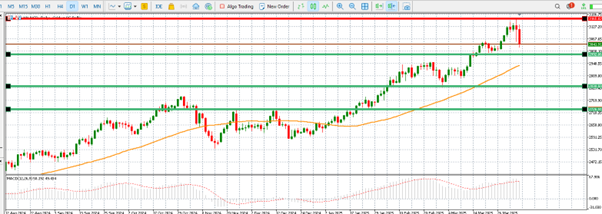As markets try to make sense of a surprisingly strong U.S. jobs report and rising trade tensions around the world, gold prices are stuck in a storm of competing forces. The latest Non-Farm Payrolls (NFP) figures, which came out last week, showed that 228,000 jobs were added in March, which was a lot more than what was expected. At the same time, the jobless rate went up to 4.2%. Simultaneously, the imposition of new tariffs is evoking concerns regarding industrial slowdowns and supply chain disruptions, thereby introducing new volatility into commodities. These factors are affecting the direction of gold. Here's what buyers should keep an eye on next.
Gold Dips on Jobs Strength, But the Bull Case Holds
As a result of the NFP report, gold prices have moderately dropped from their recent high point near $3,167. Strong job growth often makes safe investments like gold less appealing, as buyers move their money to risky bets because they are more confident about the economy. But this drop seems more like a hasty response than a change in the way things are built. Gold is still well supported above important market marks like $3,000. This is because the economy as a whole is still unclear.

MT4 Trading Platform: Gold trading chart by XTB
The strong job market means the Federal Reserve might not cut interest rates right away, but it also means bold tightening is less likely. This moderate stance puts gold in a safe medium-term lane. Its draw is still based on inflation threats and global worry, even if short-term noise rules the news.
Tariffs Stir the Pot: Volatility Meets Opportunity
On top of the jobs report is the tariff mess, which has markets on edge. Fears of less industry activity and higher input costs are making people less willing to take risks, which usually works in favour of gold. But the picture isn't so simple. Trade issues make the world less stable, but they also make people wonder about inflation and how central banks will react, which makes investors nervous.
The latest drop in gold prices shows how complicated things are, but the overall picture is still bullish. The metal's drop may just be a pause and not a complete turn around because of macro tailwinds like trade wars, slow growth in key economies, and a careful global tone.
Could a bigger selloff be on the way?
Is there going to be a bigger drop? It's possible. If people become less willing to take risks, like if trade issues get worse or stocks fall in general, profit-taking could push gold towards support levels at $3,000 or even $2,800. These levels are important for traders because they are both psychologically and technically important.
Still, a long-term break below these levels would require a huge change in the fundamentals. There are many reasons why the slump shouldn't last too long, including rising prices, tense political situations, and a world that is still wary of economic shocks. At least for now, the fundamental case for gold is still strong.
Do you want to buy the dip? A battle plan for uncertain times
For buyers, this time of restructuring could be a real gold mine. If you think the price will go back up later this year or in 2026, a drop to $3,000 looks like a great time to buy. A favourable environment is created by ongoing trade tensions, slow growth in major economies, and central banks that are getting close to the end of their tightening cycles. A good U.S. job market could slow gold's gains in the short term, but it could also lead to inflation in the long term, which is a common reason why prices go up. If these things happen, a push above $3,200 is not impossible.
The ratio of gold to silver at 100: A Silver Lining?
The gold-silver ratio recently hit 100, which is a very rare extreme that you should keep an eye on. Due to its dual role as a safe haven and an industrial metal, silver is lagging gold by a large amount because of worries about tariffs on demand. But history shows us what to do: when the ratio gets this high, like in 2020, silver usually has a sharp recovery to catch up.
Since silver seems to have been sold off too much and its quantity is still low, a return could be on the way. If worries about tariffs go away or business activity levels off, silver might do better than its more expensive sister in the coming months. This difference could be a sign of a chance for buyers who like to go against the crowd.
In Short
Gold is currently wobbling because the market is readjusting after a good jobs report in the U.S. and because of the anxiety caused by tariffs. But the bigger picture hasn't changed: inflation, trade problems, and a changing monetary situation keep the metal in good shape. It's important for traders and buyers to be flexible. Keep an eye on those basic levels and take advantage of dips when they happen. Also, don't forget gold's long-term role in a world that is far from stable.
